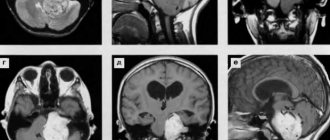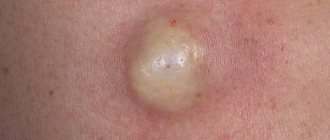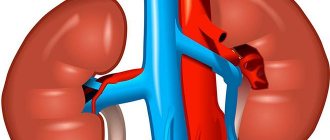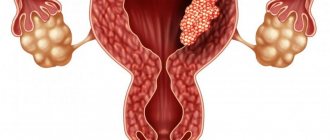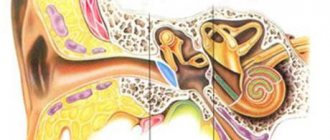What is lymphosarcoma?
Lymphosarcoma is not one disease, but a whole group of rapidly progressing malignant blood diseases .
The basis for the development of lymphosarcoma are cells of lymphoid tissue concentrated in the thymus gland, lymph nodes, spleen, tonsils, stomach, intestines and urinary tract.
You can read more about lymph here.
Clinical picture
Lymphosarcoma affects tissues of the lymphatic system. The disease in its nature, rate of progress and prognosis is close to acute forms of leukemia and bears little resemblance to lymphogranulomatosis.
In this case, the disease primarily affects the lymphatic system.
Symptoms of lymphosarcoma depend on the location of the primary tumor. Most often, lymphosarcoma is localized in the following areas:
- Abdomen.
- Rib cage.
- Nasopharynx.
- Peripheral lymph nodes (inguinal, cervical, axillary).
Lymphosarcoma of internal organs, bones or soft tissues is much less common. However, since lymphatic tissue is present in all organs and tissues of the body, the development of lymphosarcoma is theoretically possible anywhere.
If the lymphosarcoma tumor is located in the abdominal cavity, the symptoms will depend on its location.
If lymphosarcoma affects the intestines, then as the tumor grows, its obstruction develops.
If the tumor is localized outside the intestine, the growth of lymphosarcoma leads to an increase in the volume of the abdomen. As a rule, with such localization of lymphosarcoma, patients are admitted to the hospital only in the later stages. In the early stages, the symptoms of lymphosarcoma are mild and are often interpreted as signs of digestive disorders associated with the presence of worms or errors in diet.
If lymphosarcoma affects the lymphatic tissues of the chest, then at the first stage the disease manifests itself with symptoms similar to ARVI - malaise, cough, fever. When the process is far advanced, shortness of breath and dilatation of the saphenous veins appear.
When lymphatic tissue is damaged in the nasopharynx area, the following is noted:
- Enlarged tonsils, sore throat.
- Changing the sound of your voice.
If lymphosarcoma affects peripheral lymph nodes, then at the first stage of the disease, as a rule, one node enlarges, then the tumor spreads to other nodes. The tumor in this case is painless, mobile, and has a dense, elastic consistency. Individual tumor foci merge into large groups during growth.
General symptoms characteristic of all types and forms of lymphosarcoma:
- Decreased appetite and rapid weight loss.
- Increased temperature, fever.
- Night sweats.
- Increased fatigue.
Causes
Doctors cannot yet name the exact cause of this disease, but they point out a number of negative factors that may influence the occurrence of the disease:
- Genetic predisposition (family diseases passed on from generation to generation);
- Congenital disorder of immunity;
- Immunodeficiency;
- Obesity;
- Exposure to toxic chemicals;
- Long-term radiation exposure;
- Epstein-Barr virus (provokes numerous oncological diseases, can mutate, can be integrated into the genome, causing the occurrence of chromosomal abnormalities);
- Autoimmune diseases.
For children, another factor is important, namely genetic disorders, especially Down syndrome.
Forms of the disease
Oncologists distinguish two forms of the disease:
- Nodular : tumor cells grow in patches. This form is considered less dangerous;
- Diffuse : tumor cells grow in layers, that is, they do not form into structures. Worst form.
Oncologists classify the disease by stages:
- Stage 1 (local): lymph nodes are affected in one area;
- Stage 2 (regional): lymph nodes are affected in two or more zones on one side of the diaphragm. One of the extranodal organs may also be affected;
- Stage 3 (generalized): the lymph nodes on both sides, the spleen and, possibly, another organ are affected;
- Stage 4 (disseminated): diffuse damage to various lymph nodes, the spleen and several other organs can be seen.
Lymphosarcoma: symptoms of T-cell tumors of the lymph nodes and skin
T-cell tumors of lymph nodes are less common, in contrast to the B-cell form of the disease. The clinic and morphology of these groups are essentially indistinguishable from each other, although T-cell lymphosarcoma in tumor progression develops more rapidly, which determines a worse prognosis for it.
As for skin lymphosarcoma, it is itself a rare form, and therefore less studied. The localization of the tumor is concentrated in the deep layers of the dermis, after which it spreads almost along the entire subcutaneous tissue. The tumor is characterized by the density of the formation and its immobility. The affected skin does not change color. The biopsy areas develop non-healing and fairly deep ulcers.
Localization and symptoms
The disease can affect any organ where there is lymphoid tissue. And the symptoms will depend on the location of the source of the disease.
All forms of malignant tumors experience the same general symptoms:
- Fast fatiguability;
- Lack of appetite and, as a result, weight loss;
- Heat;
- Heavy sweating.
Mediastinum
This type of disease most often affects young women . The tumor is located in the anterior upper part of the mediastinum and does not leave the site of origin for quite a long time.
It does not betray its presence in any way, unless there is a feeling of squeezing. Therefore, the disease can only be detected by chance , with an X-ray of the lungs.
As the disease progresses, the following appear:
- chest pain;
- severe cough, sometimes even with hemoptysis;
- even slight physical activity causes shortness of breath;
- the chest veins dilate.
Then the tumor grows , affects the pericardium, lungs, metastasizes to the pleura, kidneys, adrenal glands, and brain. It spreads to the spleen, bone marrow, and lymph nodes much less frequently.
Lymph nodes
This type of sarcoma affects the lymph nodes.
Symptoms of the disease manifest themselves as intoxication and severe enlargement of the supraclavicular lymph nodes .
The inflamed nodes grow together and become dense. The tumor grows into neighboring tissues, then its boundaries can no longer be determined.
Tumor growth can affect the spleen and bone marrow. Sometimes the tumor blocks the lymphatic drainage and compresses the venous columns. And if it manages to grow into the kidneys and compress the ureter, then the patient develops hydronephrosis. Compression of nerve endings causes severe pain .
Enlarged lymph nodes can also indicate other diseases, for example, Hodgkin lymphoma. The diagnosis must be made by a doctor.
Thymus
A tumor of the thymus gland grows quickly, and the course of the disease is very severe. Metastases quickly grow into the meninges adjacent to the thymus tissue. When penetrating the mediastinum it produces compartment syndrome.
Spleen
First of all, the spleen increases in size. Added to this are heaviness, pain under the ribs on the left side, and high temperature.
For a long time, the tumor does not metastasize ; it can be either diffuse or nodular.
Brain
The symptoms are similar to those that occur with other brain tumors, that is, paresis and paralysis, and pressure increases inside the skull. The tumor is located in the cerebral hemispheres . It is believed to occur as a result of HIV infection. Removing the tumor leads to a deterioration in the patient's condition.
Stomach
Symptoms are the same as for colon cancer:
- the pain first appears after eating, and then becomes constant;
- the patient often complains of heaviness in the stomach;
- appetite decreases, the patient loses weight;
- as the disease progresses, bloating is observed, stool becomes unstable;
- There is bleeding in the intestines, and possible obstruction.
The tumor metastasizes almost always only in the intestine . The tumor also affects the lymph nodes, which disrupts the circulation of lymph in the walls of the small intestine and ultimately leads to edema.
Organs of the nasopharynx
- Tumor of the root of the tongue or lingual tonsil. It grows very quickly, the patient has difficulty swallowing, talking and breathing. The tongue enlarges and no longer fits in the mouth; the tongue may even dislocate and the entrance to the larynx may close. Saliva constantly flows from the tongue.
- With lymphosarcoma of the tonsils, the tumor grows rapidly: the tonsils and cervical lymph nodes become enlarged. It hurts the patient to swallow.
- The tumor in the palatine tonsil is also growing rapidly. The tonsil becomes bluish and lumpy. The patient has difficulty swallowing. Nasal breathing is also difficult. Hearing is decreasing.
Modern treatment of lymph cancer
The human lymph system fights infection with the help of B and T lymphocytes.
They develop in the bone marrow, and some mature in the thymus. Lymph cancer occurs when some of the immune system's white cells, called lymphocytes, become abnormal.
This malignant disease is in third place in the frequency of cases of diagnosis after lung and breast cancer, but it develops at a very fast pace.
- chemical contamination (acetone, benzene, toluene, xylene, turpentine, various alcohols);
- tricyclic antidepressants;
- dark hair dyes;
- formaldehyde;
- pesticides, as well as herbicides and defoliation;
- heavy metals.
There are many treatment options for lymph cancer due to its prevalence. Therefore, treatment should be purely individual. This may include:
- use of monoclonal antibodies;
- vaccine therapy;
- liposomal injections;
- anti-angiogenesis.
General therapeutic methods
Affects the lymph nodes of the neck, chest, and upper abdomen. Radiation therapy can also be used in combination with chemotherapy to treat lymphatic cancer. Radioimmunotherapy can use labeled monoclonal antibodies for some lymphomas.
Includes drugs:
- a combination of Adriamycin, Bleomycin, Vinblastine and Dacarbazine. These drugs are administered by injection. The course of treatment is repeated every 2 weeks;
- A common chemotherapy regimen involves the use of 4 groups of drugs: Cyclophosphamide, Adriamycin, Vincristine and steroid tablets Prednisolone. Treatment involves 6 therapeutic cycles, which are repeated every 4 weeks;
- monoclonal antibody “Rituximab”.
Alternative treatments for lymph cancer
Recent modern research shows the benefits of therapy with the following means:
- Fucoidan, which is found in various forms of algae and some Dead Sea animals such as sea cucumber. Brown algae can cause cell death (apoptosis) and shrink tumors. Fucoidan suppresses and leaves healthy ones intact;
- Vitamin D: 50% of patients with lymph cancer have a vitamin D deficiency, so normalizing the level of this vitamin affects lymphoma;
- drinking 5 cups of green tea can displace heavy metals from cells and prevent lymph cancer in 40% of cases;
- products such as selenium, indole 3 carbinol (displaces denaturing chemical pollutants), chlorella and beneficial probiotics.
As a result of recent research, in connection with the establishment of different types of therapeutic methods and medications, the prognosis for survival when diagnosed with lymph cancer has significantly improved.
After successful treatment, the 5-year survival rate is 64% for adults and 90% for children. Adding agents to stimulate the immune system to standard treatment has a positive effect on prognosis.
Patients after treatment for lymph cancer live in remission for 10 years or more.
Cancer of the lymphatic system is an oncological disease that can manifest itself as an independent disease, or also be the result of metastasis due to damage to other organs. Approximately 4% of malignant diagnoses occur in lymph nodes, the largest accumulation of which is concentrated in the axillary and groin areas. Oncology can be concentrated equally in one node or in several at the same time.
A doctor can detect a malignant disease of the lymphatic system during an examination. Typically, lymph cancer has the following symptoms:
- Increased sweating, which clearly manifests itself during night sleep.
- Enlarged lymph nodes.
- Soreness of the lesions, which can be expressed both in some discomfort and in a noticeable pain syndrome.
- Increased body temperature, which has insignificant indicators.
- Loss of appetite, general weakness, weight loss, anemia, disruption of the digestive and respiratory organs.
Symptoms of lymphatic system cancer are usually nonspecific and resemble those of a cold. In the early stages of oncology, it is quite difficult to determine the presence of a diagnosis even from a blood test.
With isolated damage exclusively to the lymph nodes, other organs are not involved. However, with the further development of the disease, metastasis of nearby and distant tissue areas begins. The symptomatic picture in this case depends on the location of the affected node:
- Lymphoma in the intestines leads to bloating, a significant increase is observed with a large tumor. In addition, nonspecific intestinal obstruction is diagnosed.
- Damage to the ENT organs manifests itself as signs of a complicated cold, the treatment of which does not bring adequate relief.
- Lymphoma localized in the chest is accompanied by cough and shortness of breath with dilation of the venous system.
- Subcutaneous lymph cancer has signs of dermatitis, the therapy of which does not bring results.
As soon as the tumor nodes reach a large size, compression of the internal organs occurs, which entails severe pain.
The human lymphatic system is so complex that it is very difficult to detect lymphomas in the early stages. The first and main symptom of lymph cancer is an enlarged lymph node. However, enlarged lymph nodes can be caused by many other reasons, so timely and competent diagnosis is important.
The first signs of trouble are an increase in nodes in the neck, groin and armpits. An increase in these nodes indicates a systemic process. However, they are usually painless, so some people do not pay attention to them. Cancer cells spread throughout the body through the blood and lymph, so they can appear anywhere.
Common symptoms of lymph cancer:
- Malaise,
- Weakness,
- Increased night sweats
- Shortness of breath or cough
- Skin itching, formation of ulcers on the skin.
- Loss of appetite,
- Weight loss,
- Increased body temperature
- Changes in blood composition.
- Pain in bones and stomach,
- Cramps,
- Increased volume of the spleen.
Lymphatic system cancer does not start the same for everyone. Most often - from an increase in the cervico-subclavian nodes. This increase is not accompanied by a deterioration in well-being. The nodes, as mentioned above, are painless, but some patients experience pain in them after drinking alcohol. If the tumors grow rapidly, they may coalesce into large areas.
Another option for the onset of the disease is enlargement of the mediastinal lymph nodes. With this development of events, there is a chance for early diagnosis, since these neoplasms are detected during regular fluorography. If the tumor has greatly increased, it makes itself known by coughing or shortness of breath, as it puts pressure on the bronchi. Rarely does chest pain occur. When the tumor is localized in the lung tissue, the lesions are not accompanied by painful sensations.
Quite rarely, the disease begins with damage to the peri-aortic lymph nodes. In this case, the patient experiences pain in the lumbar region, most often night pain.
Sometimes there is an acute onset of the disease. Fever, night sweats occur, and rapid weight loss occurs. At the same time, the lymph nodes may not yet be enlarged.
The etiology (nature) of the development of cancer of the lymphatic system has not been fully studied. The main theories of the genesis of lymph node cancer are:
- Viral. According to statistics, with Hodgkin's disease, antibodies to the Epstein-Barr virus are often found in the blood; The etiological influence of human papillomaviruses, retroviruses, including HIV (human immunodeficiency virus) cannot be excluded.
- Hereditary. Genetic markers of lymphogranulomatosis have been identified.
- Immune. It is believed that the development of Hodgkin lymphoma becomes possible with T-cell immunodeficiency.
- A theory suggesting that the development of this form of cancer is influenced by increased insolation (exposure to sunlight) and regular interaction with carcinogens.
Metastases to the lymph nodes can also spread in the event of complications of oncological pathologies of other organs and systems, since cancer cells spread throughout the body with the help of lymph flow. Lymph node cancer is more likely to develop if you have the following risk factors:
- Smoking.
- Age from 15 to 25 and over 60. Due to the instability of immunological protection from the effects of aggressive environmental factors.
- Occupational hazards (working with radiation, mutagenic herbicides).
- Violation of homeostasis (the ability to self-regulate) of a woman’s body after difficult or late childbirth.
- Hereditary predisposition.
Oncology of the lymph nodes is accompanied by local and general symptoms. Patients complain of pain due to cancer only in the case of a serious increase in the size of the nodes or inflammation that occurs as a result of a bacterial infection or develops due to a general immunodeficiency. Doctors include typical symptoms of disease progression:
- Regular increase in body temperature, in the evenings - to subfebrile (37.5-38°C), febrile (38-39°C) values. A feverish state may be accompanied by profuse sweating at night.
- Itching of the skin, spreading to the soles of the feet, palms, scalp, chest, or generalized (over the entire body).
- Feeling of pressure, bursting inside the lymph nodes, increasing their size.
Atypical general signs of cancer of the lymphatic system are:
- weight loss;
- loss of appetite;
- disturbances in the functioning of the digestive system;
- the appearance of shortness of breath, difficulty breathing, cough;
- anemia, other blood disorders;
- convulsive muscle contractions;
- increased sweating;
- feeling of lethargy, general weakness, decreased overall energy tone.
The severity of symptoms is also affected by the stage of cancer development. Doctors classify oncology of the system of lymph nodes and ducts depending on the degree of spread of the pathology and the complexity of the lesion into the following four stages:
- The first stage is damage to the lymph nodes of one group (for example, cervical or inguinal) or one organ.
- The second stage is the spread of malignant tumors to several groups of nodes or organs outside the lymphatic system.
- The third stage is the total spread of pathology to the diaphragm area. Paracaval lymph nodes (located behind the abdominal cavity), organs outside the lymphatic system, and the spleen are affected.
- The fourth stage is the spread of pathology to organs and tissues of other systems, while the nodes may remain unaffected.
Diagnostics
Lymphosarcoma is diagnosed using different methods:
- General complete blood count (leukocyte formula, platelet and leukocyte counts);
- Blood biochemistry (amount of total protein, uric acid, alkaline phosphatase, bilirubin, aminotransferases, creatinine, protein fractions);
- CT scan of the head, neck, abdomen;
- Biopsy of tissue from the diseased organ;
- Myelogram (to detect abnormal cells in the bone marrow);
- Chest X-ray (shows the condition of the lymph nodes of the mediastinum and thymus, reveals fluid in the pleura);
- MRI (assesses the condition of the brain and spinal cord);
- Ultrasound (determines the condition of the liver, spleen);
- Spinal puncture (detects the presence of tumor cells);
- Intestinal endoscopy (sampling of material for biopsy in case of damage to the stomach or intestines);
- Cytogenetic study of tumor cells.
Diagnostic methods
Lymphosarcoma has its own indication number in the ICD 10 system.
At the first suspicion of this disease, the doctor carefully examines all groups of lymph nodes, trying to identify enlarged ones, their consistency and soreness. Next, the patient is prescribed general tests:
- General blood and urine analysis.
- Blood biochemistry for tumor markers.
- To detect HIV and syphilis.
In the first stages of studying the patient’s blood test parameters, there will be no significant deviations from the norm. At later stages of development, the ESR will be greatly increased in the blood and regional cells will appear.
Having received confirmation of the presence of a malignant process, the patient will be sent for further examination to determine the extent of damage to the body. For this purpose, patients are referred to:
- Ultrasound – all lymph nodes, as well as organs located in the abdominal cavity, are examined.
- Collection of punctures from inflamed lymph nodes for cytological and histological examination. This type of sampling must be done from the lymph node that became inflamed first.
- Skin scraping – for skin cancer.
- X-ray examination for suspected lymphosarcoma of the chest.
- Laparotomy – to examine nodes located behind the peritoneum.
- MRI or CT – to identify the condition of bone tissue.
Ultrasound of the lymph nodes of the neck
All these examination methods are carried out to identify the disease, determine the degree of development of the disease and determine the treatment method.
Forecast
The forecast is given depending on the following factors:
- When the disease was discovered:
- is of great importance : the chance of recovery is reduced for older people;
- The prognosis worsens for people with: endocrine diseases, obesity, low immunity.
– if at an early stage, then after treatment 50 percent of patients can count on long-term (up to five years) remission;
– if the tumor was very small, then treatment will be successful for 80 percent of patients;
– if the disease has reached stage 3 or 4, then treatment will not be effective;
Lymphosarcoma
The term lymphosarcoma unites a whole group of oncological blood diseases that progress very quickly. These diseases can also be found under the names of lymphocytic or lymphoblastic lymphoma. Lymph consists of prolymphocytes, T and B - cellular lymphocytes. It is from them that lymphosarcoma develops.
Depending on the nature of the growth of the lymphocyte group, these can be individual nodes or cancer cells spreading throughout the affected organ and infiltrating it. As the disease progresses, the nodes fuse and transform into a dense tumor. There may be several such lesions; single formations are much less common.
A great danger is the fact that tumors of this type tend to form random metastases very early. In addition, infiltration of tissues and organs located around the primary focus of the disease occurs.
Initially, the oncological process occurs in any one lymph node or any other organ, and then the pathological cells are spread through the lymph flow or with the blood throughout the body. As a result, secondary malignant tumor formations appear. The process of spread of cancer cells in lymphosarcoma is very difficult to stop and control.
Treatment of lymphosarcoma
Treatment of lymphosarcoma is possible using several methods. Only your doctor will decide which one is right for you after tests and studies.
Traditional methods
Traditional medicine offers its own recipes, proven over the years, for the treatment of oncology.
Celandine juice kills cancer cells , simultaneously restoring lymphocytes. Traditional healers claim that it helps even with the fourth stage of cancer, but this does not mean that you can refuse drug treatment.
- During the flowering period, collect celandine.
- Chop the stems, flowers and leaves and press tightly into the bottle.
- Tie the neck of the jar with gauze and let it stand for 3 days in a warm place.
- Squeeze out the juice through gauze and let it sit for another 3 days in a dark place.
- Every morning and evening (on an empty stomach) drink a tablespoon of juice, wash down with milk or kefir. You need to take the medicine for 20 days.
Medications
The following drugs are used for treatment under medical supervision:
- Asparaginase medac – solution for injection;
- Methotrexate-ebeve - tablets and solution for injection.
At the doctor's
An oncologist offers a course of chemotherapy and radiotherapy .
Chemotherapy uses prednisolone, doxarubicin, cyclophosphamide and oncavin. Three courses (5 days each) are carried out with an interval of a month. For stages 3 and 4 lymphosarcoma, 6 to 17 courses are carried out.
Chemotherapy is combined with the drug MabThera , which acts exclusively on tumor cells.
At the same time, the tumor is irradiated for 6 weeks . For grades 3 and 4 of the disease, the method is not used.
After the course of treatment, a re-examination is carried out to check the result. If there is no result, then a bone marrow or stem cell transplant . At this point, high doses of cytotoxic drugs can be used to eliminate resistant cancer cells.
Treatment
Treatment consists of high-dose polychemotherapy. This treatment is prescribed until the patient goes into remission.
- Cyclophosphamide, Adriamits are mandatory Prednisolone.
- Cyclophosphamide, Oncovin, and Prednisolone.
Treatment with 2-3 generation drugs is prescribed:
- Methotrexate, Bleomycin.
- Methotrexate, Leucovorin, Cytosar.
With this course of the disease, treatment is carried out in cycles. Therefore, it is necessary to strictly adhere to the dosage of the prescribed drug and maintain the necessary time between doses.
In rare cases, cytostatics are prescribed. Recently, such drugs have been excluded from the treatment regimen, as they increase the likelihood of remission.
Self-medication and prevention
You cannot self-medicate, because you can waste time, and the disease can become severe.
Prevention measures have not been developed because medicine still does not know the exact cause of the disease.
It’s not for nothing that doctors talk about the right attitude towards your health. The simplest and most effective thing you can do is give up bad habits, avoid carcinogens, eat right . This is a chance to live your life without cancer.
Relapse and complications
Lymphosarcoma is a neoplasm that recurs more often than others. Basically, recurrence of the disease occurs within a few months after the end of therapy. This is due to the rapid metastasis of cancer pathology and the fact that doctors often cannot eliminate all metastases during treatment. Complications of lymphosarcoma can be varied and depend on the location of the tumor process:
- when the superior vena cava is damaged, swelling begins in the entire upper part of the body,
- if the tumor is located in the esophagus, then it becomes difficult for a person to swallow food,
- when the tumor is localized in the respiratory tract, shortness of breath begins, the patient becomes difficult to breathe, the skin takes on a bluish tint,
- when the spinal cord is damaged, pain occurs, as well as impaired motor activity and sensitivity of the arms and legs,
- when the tumor spreads to the bile ducts and gallbladder, the skin becomes yellow, as do the mucous membranes of the mouth, as well as the sclera,
- with lymphosarcoma in the urinary tract, the patient experiences a frequent false desire to empty the bladder,
- if lymphosarcoma is localized in the gastrointestinal tract, then bleeding occurs or stool or stomach contents leak into the abdominal cavity.
When doctors diagnose a tumor of lymphoid tissue in the liver, the patient’s skin is yellow, and the patient himself is weakened. When bone tissue is damaged, pathological fractures often occur and hypercalcemia develops. When localized in the bone marrow, the number of healthy blood cells decreases. When the oncological process spreads to the brain and spinal cord, the patient constantly has headaches and back pain, sensitivity is impaired, memory deteriorates and movements are constrained.



